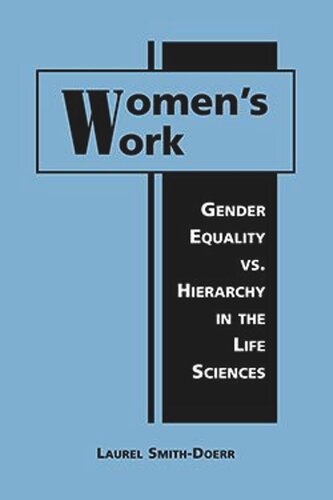

Most ebook files are in PDF format, so you can easily read them using various software such as Foxit Reader or directly on the Google Chrome browser.
Some ebook files are released by publishers in other formats such as .awz, .mobi, .epub, .fb2, etc. You may need to install specific software to read these formats on mobile/PC, such as Calibre.
Please read the tutorial at this link: https://ebookbell.com/faq
We offer FREE conversion to the popular formats you request; however, this may take some time. Therefore, right after payment, please email us, and we will try to provide the service as quickly as possible.
For some exceptional file formats or broken links (if any), please refrain from opening any disputes. Instead, email us first, and we will try to assist within a maximum of 6 hours.
EbookBell Team

0.0
0 reviewsWomen scientists working in small, for-profit companies are eight times more likely than their university counterparts to head a research lab. Why? Laurel Smith-Doerr reveals that, contrary to widely held assumptions, strong career opportunities for women and minorities do not depend on the formal policies and long job ladders that large, hierarchical bureaucracies provide. In fact, highly internally linked biotechnology firms are far better workplaces for female scientists (when compared to university settings or established pharmaceutical companies), offering women richer opportunities for career advancement. Based on quantitative analyses of more than two-thousand life scientists' careers and qualitative studies of scientists in eight biotech and university settings, Smith-Doerr's work shows clearly that the network form of organization, rather than fostering "old boy networks," provides the organizational flexibility that not only stimulates innovation, but also aids women's success.